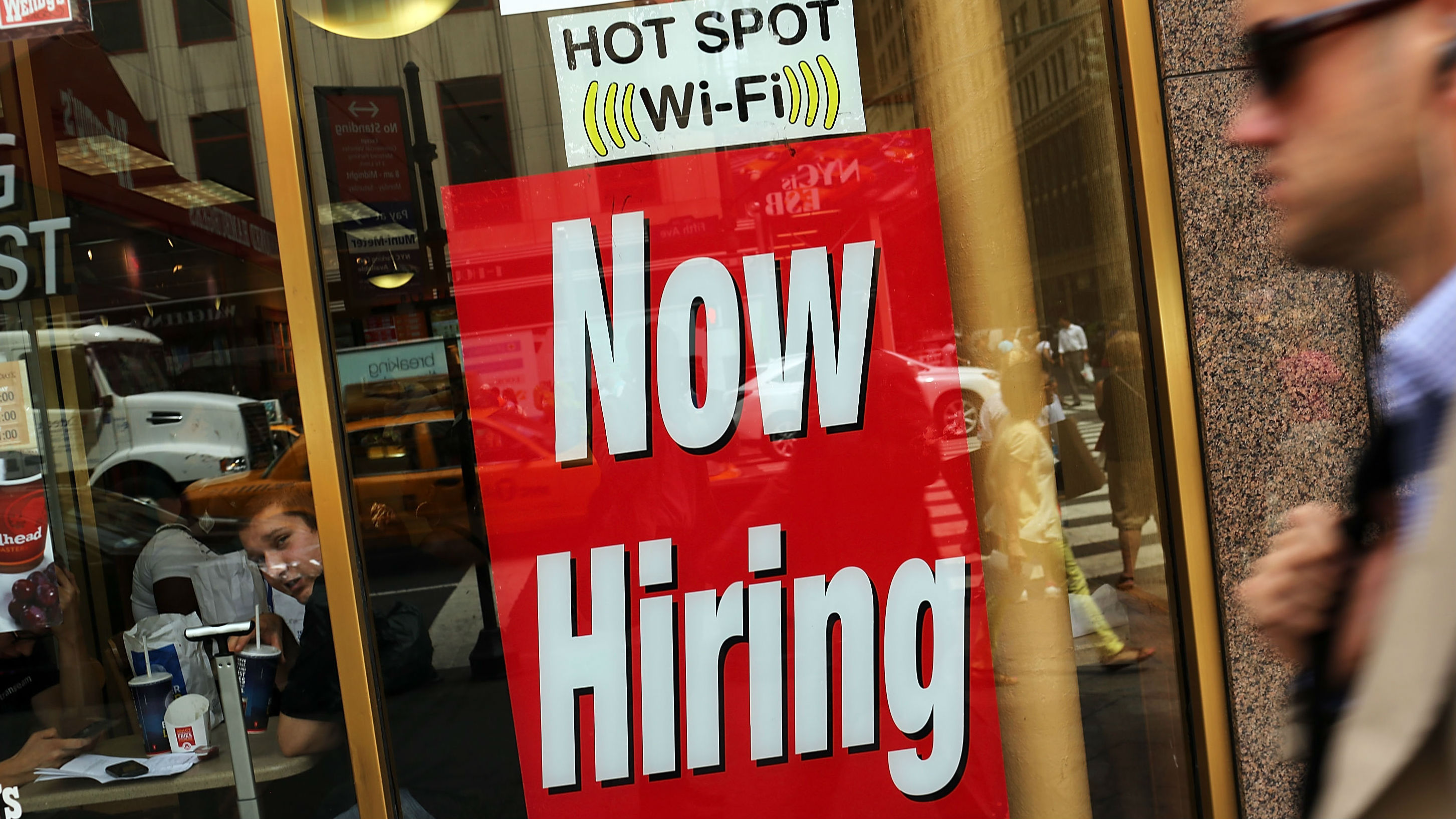Breaking down Britain's employment boom
Hiring is up and unemployment is down, but none of that is feeding into wages

Britain is riding the crest of a wave on employment, with record numbers of people in work, the lowest headline unemployment rate for decades and hiring now ramping up.
But you can't bring up the subject of employment without hearing complaints about insecure work and, most critically, stalling wage growth that equate to falling "real" pay.
Let's break down what's really going on in the UK's labour market.
The Week
Escape your echo chamber. Get the facts behind the news, plus analysis from multiple perspectives.

Sign up for The Week's Free Newsletters
From our morning news briefing to a weekly Good News Newsletter, get the best of The Week delivered directly to your inbox.
From our morning news briefing to a weekly Good News Newsletter, get the best of The Week delivered directly to your inbox.
Permanent jobs
These are jobs with set hours that are under an open-ended, pay-as-you-earn contract.
According to the Recruitment & Employment Confederation (REC) the hiring of permanent roles through recruitment agencies across the UK was at its highest rate for more than two years last month, says the Financial Times.
Temporary jobs
A free daily email with the biggest news stories of the day – and the best features from TheWeek.com
As the name suggests, these are jobs that either directly or through an agency are non-permanent and typically cover a set contracted period.
Temporary staff are being hired at an even faster rate than permanent staff right now, the REC figures show, especially in London where the hiring for permanent roles was flat month on month in July but temporary recruitment grew.
Kevin Green, chief executive of the REC, attributes this to "uncertainty about how Brexit would affect London-centric sectors such as financial services".
He says: "When there's uncertainty… you just get someone to fill in for a three-month period or a six-month period until you see what's going to pan out."
Vacancies
Statistics for the number of jobs currently being advertised provides a window into the near-term future of the jobs market and business confidence in general.
Again, there's a broadly positive story here. REC has reported the highest demand for both permanent and temporary staff for almost two years, while the latest official government figures show vacancies were flat at 774,000 between April and June, but up 29,000 year on year.
Employment
Moving on to the official measures used by the Office for National Statistics, employment relates to the number of people of working age (16 to 64) who have a job. Note the number of actual jobs can be higher than the number of people employed as some people do more than one.
With employment at 74.9 per cent, Britain has its highest ever employment rate since records began in 1971. This means that more than 32 million people are in work.
Unemployment
Headline unemployment is the key figure used to determine the health of the labour market. It reflects the number of people of working age who are actively looking for work but not currently employed.
It's currently at its lowest level since 1975, with a jobless rate of 4.5 per cent. This equates to 1.49 million people.
Claimant count
A figure that many people mistake for unemployment, but which only describes the number of people who are claiming unemployment benefits.
Many people looking for work are not eligible for benefits. This could be because their partner earns too much to qualify or they have a lot of savings. In short: all of those on unemployment benefits are unemployed, but not all unemployed people claim benefits.
The claimant count rose marginally in June, by 6,000 to 829,000.
Economic inactivity
People who are jobless and not looking for employment are deemed to be economically "inactive". This would apply to parents who have decided to give up work, for example.
Economic inactivity has been falling in recent years, hitting its joint-lowest rate, since records began in June, of 21.5 per cent. That's 8.8 million people of working age.
Underemployment
This is where the UK employment picture gets a little more complicated.
People are deemed to be underemployed if they are working part-time hours but would like to work more. That's to say they aren't unemployed but they don't have the level of work they might want or need.
Katie Allen says in The Guardian that this is true of 12.1 per cent of part-time workers. The rate has fallen over the past three years but is up from 9.4 per cent a decade ago.
This doesn't mean that the number of actual hours being offered for work is falling. Official figures show that both average and total hours worked have been keeping pace with employment growth for at least five years.
Insecure work
More people say they want more work but the number of hours available doesn't appear to be dropping.Perhaps squaring the circle here is the increase in "insecure" work, which involves fewer guarantees over working hours.
It's worth noting the increasing prevalence of so-called "zero-hours" contracts, up from 168,000 in 2010 to 905,000 now (although there's little agreement over how reliable these figures are).
Then there's self-employment, whose share of the workforce has doubled since 1980 to 15 per cent. Some of this is attributed to the so-called "gig economy". If the government accepts the recommendations of a recent review many of these jobs could revert to employed roles.
Productivity
A final piece of the puzzle is productivity, which is the amount of output per hour produced by the UK workforce. It's a figure that's affected by people being underemployed, or being employed below their intellectual or physical capacity.
Productivity is currently falling and is back below its pre-crisis levels. Explanations range from a surfeit of low-paid work due to globalisation to a shift in power to employers and so higher rates of insecure work.
Wages
All this leaves us with the main obstacle in an otherwise strong labour market: wages are not improving. In "real" terms (after accounting for inflation) they are lower than they were ten years ago – and are falling again.
Wages excluding bonuses are rising at around two per cent a year, while inflation is running at 2.6 per cent. So the average pay packet is declining in value.
Suggested remedies include toughening labour market laws and investing in upskilling the workforce, especially in low-employment areas, in order to combat weak productivity.
REC's figures hint that an unlikely helping hand could come – at least for some jobs and headline figures – from Brexit.
Employers report a decline in the availability of permanent and temporary workers despite the heightened demand for roles, mostly because of a drop in skilled workers coming over from the EU. In response, employers are boosting starting salaries.
-
 ‘Autarky and nostalgia aren’t cure-alls’
‘Autarky and nostalgia aren’t cure-alls’Instant Opinion Opinion, comment and editorials of the day
-
 Japan’s Princess Aiko is a national star. Her fans want even more.
Japan’s Princess Aiko is a national star. Her fans want even more.IN THE SPOTLIGHT Fresh off her first solo state visit to Laos, Princess Aiko has become the face of a Japanese royal family facing 21st-century obsolescence
-
 Australia’s teen social media ban takes effect
Australia’s teen social media ban takes effectSpeed Read Kids under age 16 are now barred from platforms including YouTube, TikTok, Instagram, Facebook, Snapchat and Reddit